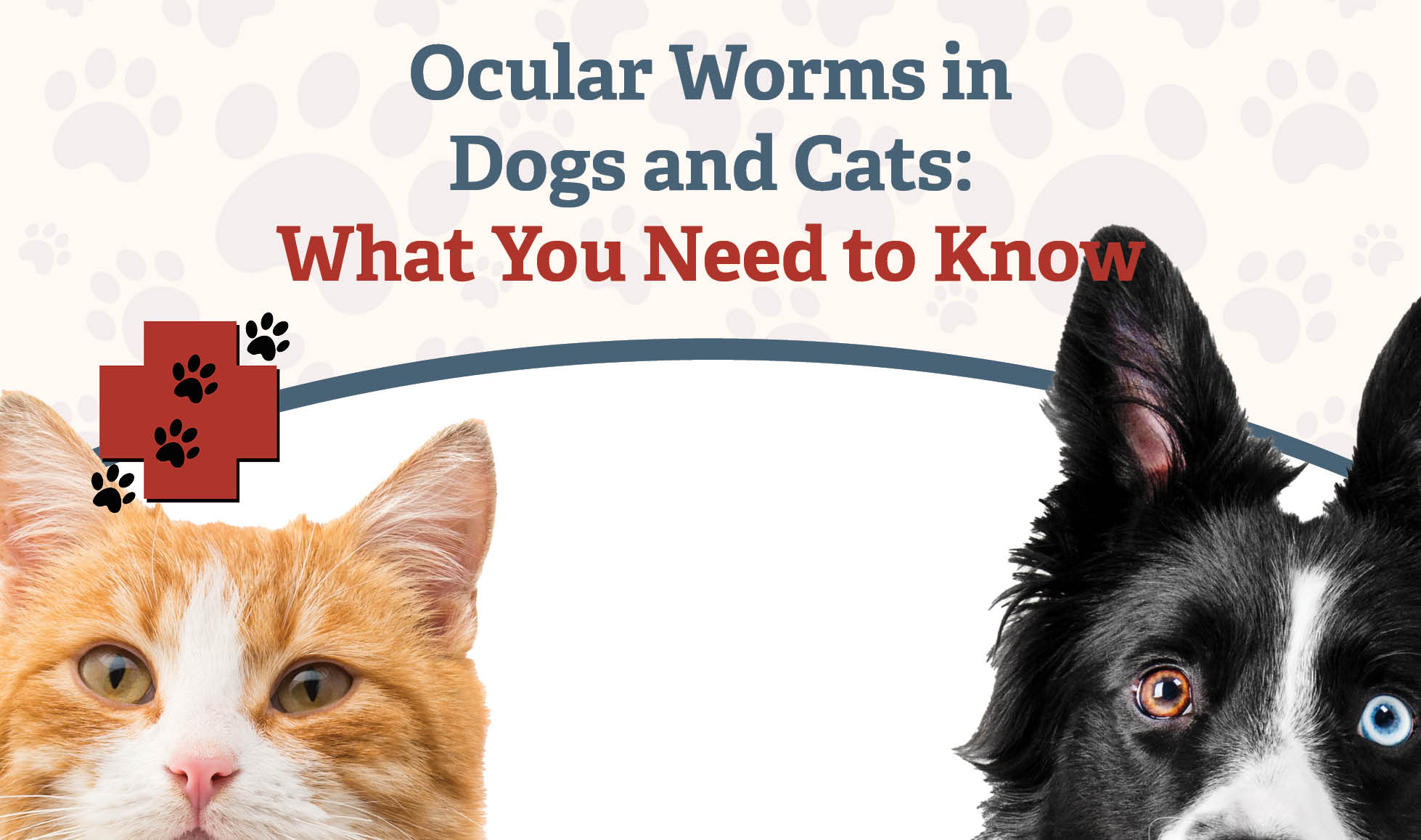At Middlehope Veterinary Hospital, we are committed to keeping your pets healthy and informed. Over the last year we have noticed a new parasite to this area called ocular worms. These parasites can affect both dogs and cats, and their presence is becoming more common in the Hudson Valley. In this post, we’ll explore the symptoms, diagnosis, prevention strategies and treatment options.
What Are Ocular Worms?
Ocular worms, primarily Thelazia californiensis and Thelazia lacrymalis, are nematode parasites that infect the conjunctiva and surface eyes of dogs and cats. Thelazial worms are white, and about 10-14 mm in length. Adult worms can live under the external eyelids in the conjunctival fornices, behind the third eyelid, and within the nasolacrimal and lacrimal gland excretory ducts.These worms can cause mechanical damage to the conjunctiva and cornea. Non-biting dipteran flies, most commonly the variegated fruit fly, serve as vectors for the worm.
Symptoms to Watch For
Recognizing the symptoms of ocular worms is vital for early intervention. Common signs include:
- Excessive Tearing: Increased tear production can indicate irritation.
- Redness or Swelling: Inflammation of the conjunctiva is common.
- Discharge: You may see mucus or pus-like discharge from the eyes.
- Squinting or Pawing at the Eyes: Pets often squint or rub at their eyes due to discomfort.
- Visible Worms: In some cases, worms may be visible on the surface of the eye or inner eyelids.
If you notice any of these symptoms, it’s essential to consult your veterinarian as soon as possible.
Diagnosis
Diagnosing ocular worms typically involves a thorough examination of the eyes using specialized tools (magnification and an opthalmoscope) to look for the worms.
Treatment Options
Treatment for ocular worms generally includes:
- Anthelmintic (antiparasitic) Medications: These medications are designed to target and eliminate the worms. Luckily, the most common medication used is the same as your pets normal heartworm preventative.
- Manual Extraction: In most cases your veterinarian will topically numb your pets eye and then manually flush and remove the parasites. This procedure is performed by a veterinarian under sterile conditions to safely remove the worms from the conjunctival sac.
- Supportive Care: Anti-inflammatory eye drops or ointments may be prescribed to soothe irritation and reduce inflammation.
Most pets respond well to treatment, but early intervention is key to preventing complications such as a corneal ulcer.
Increased Prevalence in the Hudson Valley
Recent reports have shown a rise in ocular worm cases in the Hudson Valley. Factors contributing to this increase include:
- Climate Changes: Warmer temperatures can boost the populations of flies that transmit these parasites.
- Increased Outdoor Activities: As more pets spend time outdoors, their exposure to these vectors rises.
Being aware of this trend and recognizing symptoms early can help protect your pets.
Prevention Strategies
Preventing ocular worms is essential to keeping your pets safe. Here are some effective strategies:
- MONTHLY YEAR ROUND PARASITE PREVENTION!: Regular use of heartworm preventatives will prevent infection. Even a small lapse in giving preventatives can result in an infection.
- Fly Control: Minimizing exposure to flies, particularly during peak seasons, can significantly reduce the risk of infection. Consider using pet-safe insect repellents.
- Hygiene Practices: Keeping your pet’s eyes and surrounding areas clean can help minimize the risk of infection.
- Limit Outdoor Time: Reducing outdoor exposure during high fly activity can help protect your pet.
Zoonotic Properties
Although ocular worms primarily affect pets, it can occur in people and is transmitted by the same flies. Although dogs, cats and other species may serve as reservoir hosts, it is most likely that dogs and people contract the disease from exposure to the same vectors (flies) and it is unlikely transmitted directly from dogs or cats to people.
Conclusion
Ocular worms are a growing concern for pets in the Hudson Valley, but with awareness and monthly, year round parasite prevention, you can protect your furry companions. If you notice any symptoms or have concerns about your pet’s eye health, please reach out to us at Middlehope Veterinary Hospital. Together, we can ensure your pets remain happy and healthy!
